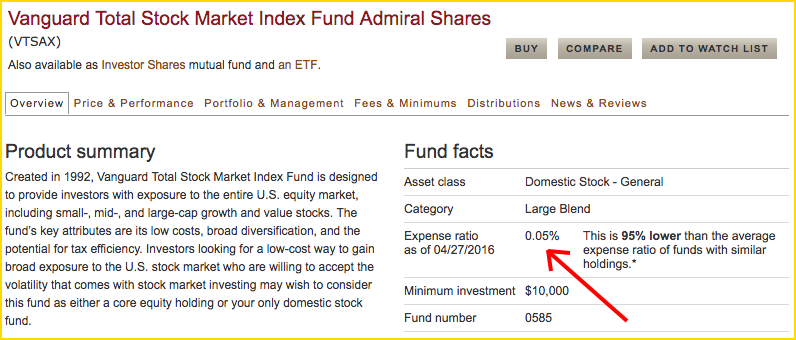What is an Expense Ratio? Part 1
- April 19, 2017
- by Steven

Expense ratio is one of those cryptic financial terms that has a dramatic impact on the performance of your mutual fund or exchange traded fund (ETF). And if you invest in mutual funds or ETFs, you’ll 100% want to know what it means for your portfolio. In a nutshell, the higher the expense ratio, the more you are getting squeezed.
Imagine you’re at a restaurant. You sit down at your table. The waiter arrives and fills your glasses with water. And hands everyone in your party menus.
You comb through the menu.
Veal parmigiana … $18
Chicken parmigiana … $15
Chicken marsala … $16
And alongside each menu item you see a number. In the restaurant industry and virtually every other industry in the world, this number is called a price.
And you know what a price is. You know it is the cost or fee you pay for your order. It is the amount of money transferred from your pocket to that of the restaurant’s.
In restaurants, terms like price and cost and fee are clear, to the point, and never confusing. You know $15.00 dollars for a mouth-watering chicken parm dressed with melting mozzarella means you will be less $15.00 dollars after enjoying a mouth-watering chicken parm dressed with melting mozzarella because $15.00 dollars is the price.
You finish dinner. And your bill arrives and you hand the waiter your credit card and thus you pay a price. Which means you pay a fee. Which means you incur a cost. Which means you spend money equivalent to the purchase amount of your meal. And now you return home.
And you go and sit down at your desk. And you logon to your computer to record your expenses from that night’s dinner. You enter the numbers in your budget. And when you’re done, you decide to visit Vanguard.com because you’re thinking about investing in mutual funds.
You’ve heard a three-fund portfolio is a mouth-watering investment strategy dressed with compounding dividends and coupon payments. And you know a three-fund portfolio means an asset allocation spread across:
- One total market domestic stock fund
- One total market international stock fund
- And one total market bond fund.
And so you’re combing through Vanguard’s menu of mutual funds to build your three-fund portfolio and you come across a term that reads expense ratio with a percentage next to it. And you think to yourself, what in world’s name is an expense ratio?
I tell you:
An expense ratio is a price, just like the price you saw on your restaurant menu.
It is an amount of money you pay the investment company, in this case Vanguard, for your “order.” Your order being shares in a mutual fund or exchange traded fund (ETF).
While expense ratio, unlike price, is not clear, not to the point, and rather confusing, it simply means price or fee or cost. And that’s it.
On a nuts-and-bolts level, an expense ratio is a fee investment houses charge to cover the cost of operating a mutual fund or ETF and is calculated as a yearly percentage of your assets in the fund.
For example, pretend you invest $100,000 in the Vanguard Total Stock Market Index Fund Admiral Shares (VTSAX), which comes with an expense ratio of 0.05%. Thus, the cost you incur for VTSAX is $50 per year for every $100,000 invested because 0.05% multiplied by $100,000 is $50. If you were to invest $200,000, you'd pay $100 per year. And so on and so forth.
Remember: a quality investment does not inherently mean an expensive investment, and usually never does. Because, all things equal, the higher the expense ratio, the more money you pay in fees. Higher fees mean more money lost and thus not able to compound for you.
An expense ratio of 0.05% is a beautiful sight because it is just about the lowest fee regular fund investors can find. Only institutional investors, like university endowment funds and pension funds, have access to lower expense ratios because of the purchasing power they command by pooling together large sums of money.
For context, consider the following two mutual funds:
|
Fund |
Expense Ratio |
Cost per $100k per year |
|
Vanguard Total Stock Market (VTSAX) |
0.05% |
$50 |
|
Wilshire 5000 Index (WFIVX) |
0.64% |
$640 |
Both are index mutual funds with similar holdings; they attempt to track the entire U.S. stock market. But they have wildly different expense ratios. How do you think the difference in fees will impact your returns?
Investing $100,000 over 20 years with an assumed return of 7%:
|
Fund |
Expense Ratio |
Resulting Balance |
|
Vanguard Total Stock Market (VTSAX) |
0.05% |
$383,368 |
|
Wilshire 5000 Index (WFIVX) |
0.64% |
$343,215 |
If you invest in Vanguard, then over a 20 year period at a 7% rate of return, you will have about $40,000 more dollars in your pocket than the Wilshire fund because of Vanguard’s lower expense ratio. And as compounding continues to work its magic, the difference will be even greater!
Keep in mind - expense ratios are a HIDDEN cost! You don't actually write a check or provide a credit card number to pay for it. Instead the fund managers silently deduct it from your balance each month by adjusting the price of the fund. You never notice the negative effects it has on compounding. You have to look closely to find it (which you know to do now). Expense ratios can be as low as 0.05% and some above 2%! If you have a 401k plan at work, it is a good bet that it offers several funds that do the same thing but have wildly different expense ratios. Before you pick a fund, make sure to consider what it does AND what the expense ratio is to get the best return! Don't let future you get ripped off!

And note, expense ratios are not the only fees associated with mutual funds and ETFs because many come with sales loads or commissions, account service fees, among others. You want to be aware of these extra fees because they can creep up on you and rob you of returns.
The moral of the story: the key to long-term investing is keeping your investment costs low. And seeking out investment vehicles, like passive index mutual funds, with ultra-low expense ratios of 0.05%, is a fantastic way to do so, as you lose less money to fees.
Because a big expense ratio is nothing more than a big price.
Now continue to What is an Expense Ratio Part 2, which explains in detail what the fee goes towards.
Notes:
- Remember that all investments are subject to risk, including the possible loss of the money you invest.
- Remember to read your fund’s prospectus because it’ll spell out the fees you owe.
- FINRA Fund Analyzer









